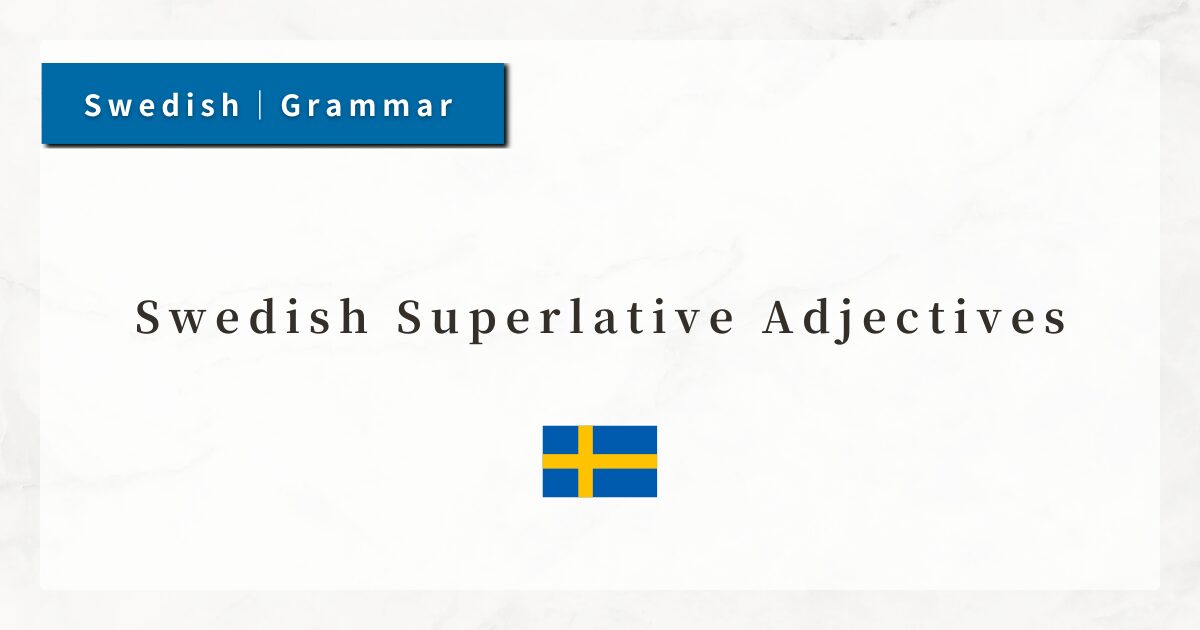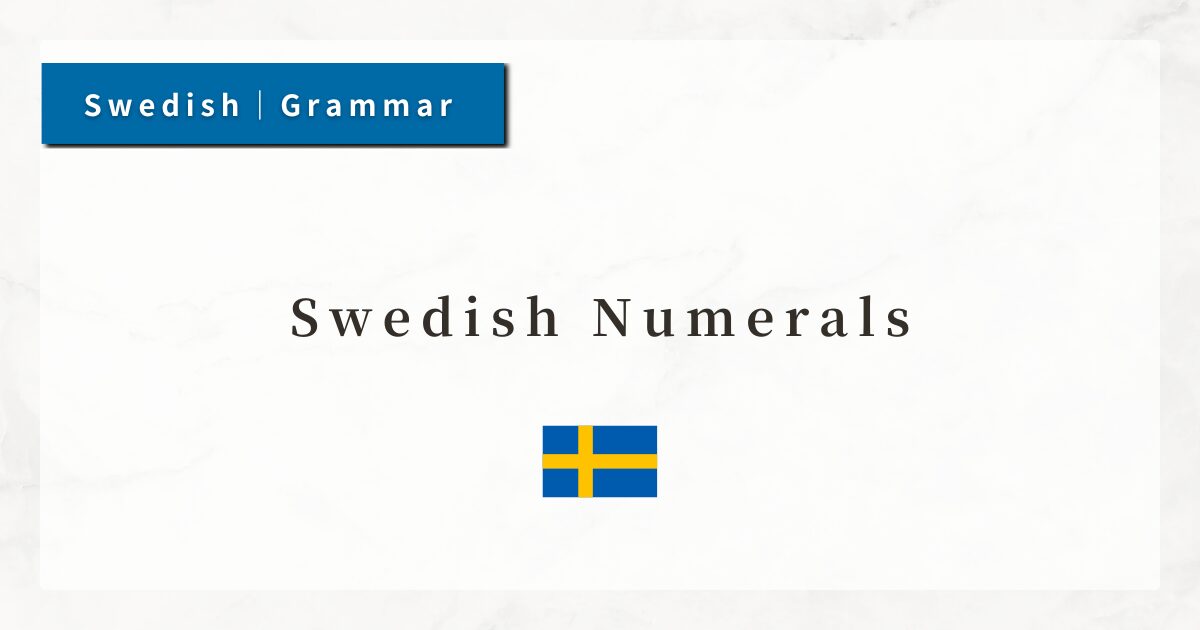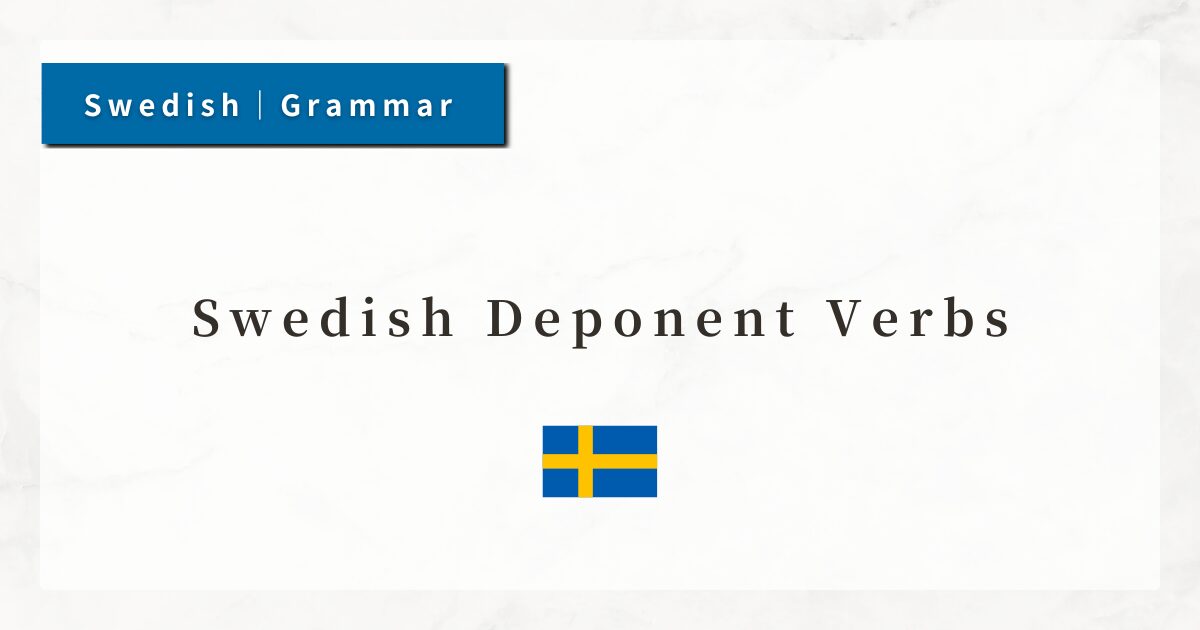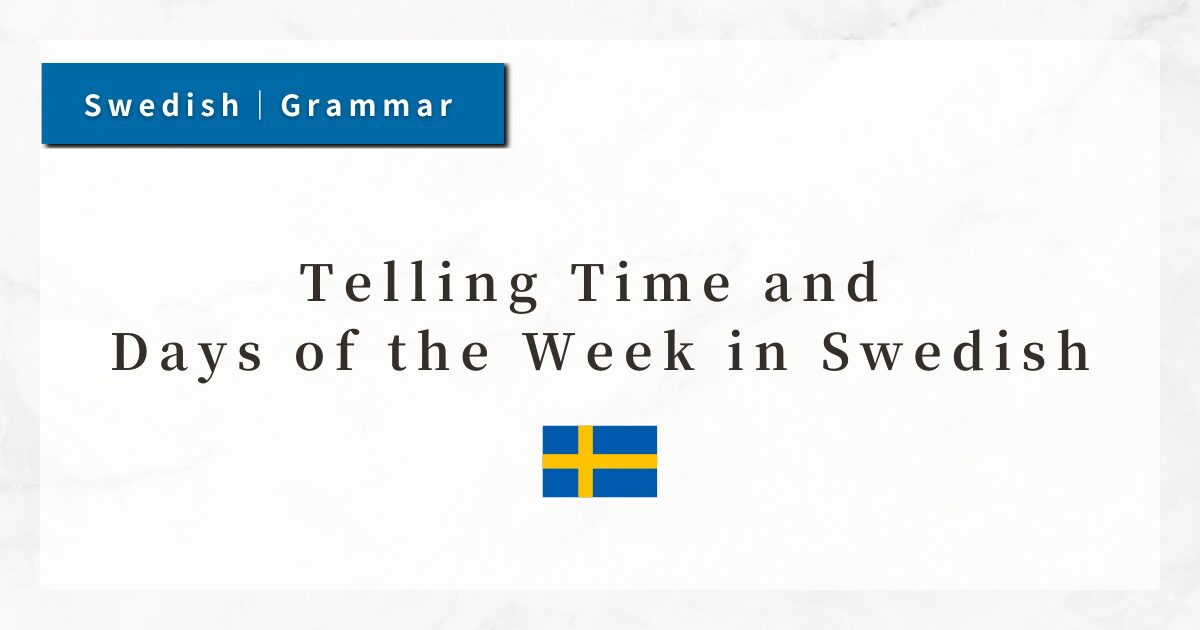#36 Swedish Superlative Adjectives|Rules and Usage Explained

The Swedish superlative is used to express the highest degree of a quality, equivalent to “the most …” or “the …-est” in English.
It corresponds to expressions like “the biggest” or “the best”, and is used when comparing three or more things and stating a conclusion, such as “This is the largest of them” or “Which is the cheapest product?”
In Swedish, superlative adjectives are formed by adding -ast to the adjective stem (or by irregular changes). When used together with a noun, they are accompanied by the definite article (den, det, de).
In this lesson, I will explain how to form and use the superlative in Swedish, with examples.
1. The Basics of the Superlative
The superlative is used when comparing three or more items and pointing out the one with the highest degree of a certain quality.
- Den här staden är störst.
(This city is the biggest.) - Jag känner mig lyckligast.
(I feel the happiest.)
The superlative always implies a comparison within a group.
2. Formation and Patterns
The regular way to form the superlative is by adding -ast to the adjective.
- billig (cheap) → billigast (the cheapest)
- lång (long) → längst (the longest)
- snabb (fast) → snabbast (the fastest)
This “adjective + -ast” form is the basic (indefinite) superlative.
3. Irregular Superlatives
Some common adjectives change irregularly in the superlative.
| Positive | Comparative | Superlative | Translation |
|---|---|---|---|
| bra (good) | bättre | bäst | the best |
| dålig (bad) | sämre | sämst | the worst |
| stor (big) | större | störst | the biggest |
| liten (small) | mindre | minst | the smallest |
| gammal (old) | äldre | äldst | the oldest |
| ung (young) | yngre | yngst | the youngest |
Other adjectives, like hög and tung, form the superlative ending in -st, which takes an additional -a in the definite form.
| Positive | Comparative | Superlative | Definite Superlative | Translation |
|---|---|---|---|---|
| hög (high) | högre | högst | högsta | the highest |
| tung (heavy) | tyngre | tyngst | tyngsta | the heaviest |
4. Two Main Uses of the Superlative
4-1. Before a noun (with the definite article)
When the superlative modifies a noun, it must be used with the definite article (den, det, de), and the adjective takes the definite ending (-e or -a).
- den billigaste boken
(the cheapest book) - det största huset
(the largest house) - de bästa filmerna
(the best movies)
4-2. As a predicate (without the definite article)
When the superlative is used as a complement, no article is needed. It directly describes the subject.
- Han är snabbast.
(He is the fastest.) - Stockholm är störst.
(Stockholm is the biggest.)
Here, the superlative is in the predicate, emphasizing the subject’s quality.
5. Indicating the Range of Comparison
Predicate superlatives often include a phrase that specifies the range of comparison, such as “in the world” or “of all.”
- Hon är bäst i världen.
(She is the best in the world.) - Han är starkast av alla.
(He is the strongest of all.) - Det är snabbast i testet.
(It was the fastest in the test.)
Such expressions clarify the group within which the superlative applies.
6. Superlatives of Adverbs
Superlatives also exist for adverbs. They are generally formed the same way, with -ast.
- Han springer snabbast.
(He runs the fastest.) - Hon arbetar bäst.
(She works the best.)
Adverbial superlatives describe the highest degree of an action or state, unlike adjective superlatives, which modify nouns.
Common superlative adverbs:
| Adverb (Positive) | Superlative | Meaning |
|---|---|---|
| bra (well) | bäst | best |
| dåligt (badly) | sämst | worst |
| snabbt (fast) | snabbast | fastest |
| mycket (much) | mest | most |
These forms are frequently used when ranking or comparing actions.
7. Summary
- The superlative expresses “the most …” or “the …-est.”
- Formed by adding -ast, with irregular patterns for common adjectives.
- When placed before a noun, it requires the definite article (den, det, de) and a definite ending (-e or -a).
- In predicate use, no article is required.
- Phrases like i världen (in the world) or av alla (of all) specify the scope of comparison.
- Adverbs also take superlative forms (bäst, snabbast, mest), describing the highest degree of an action.




